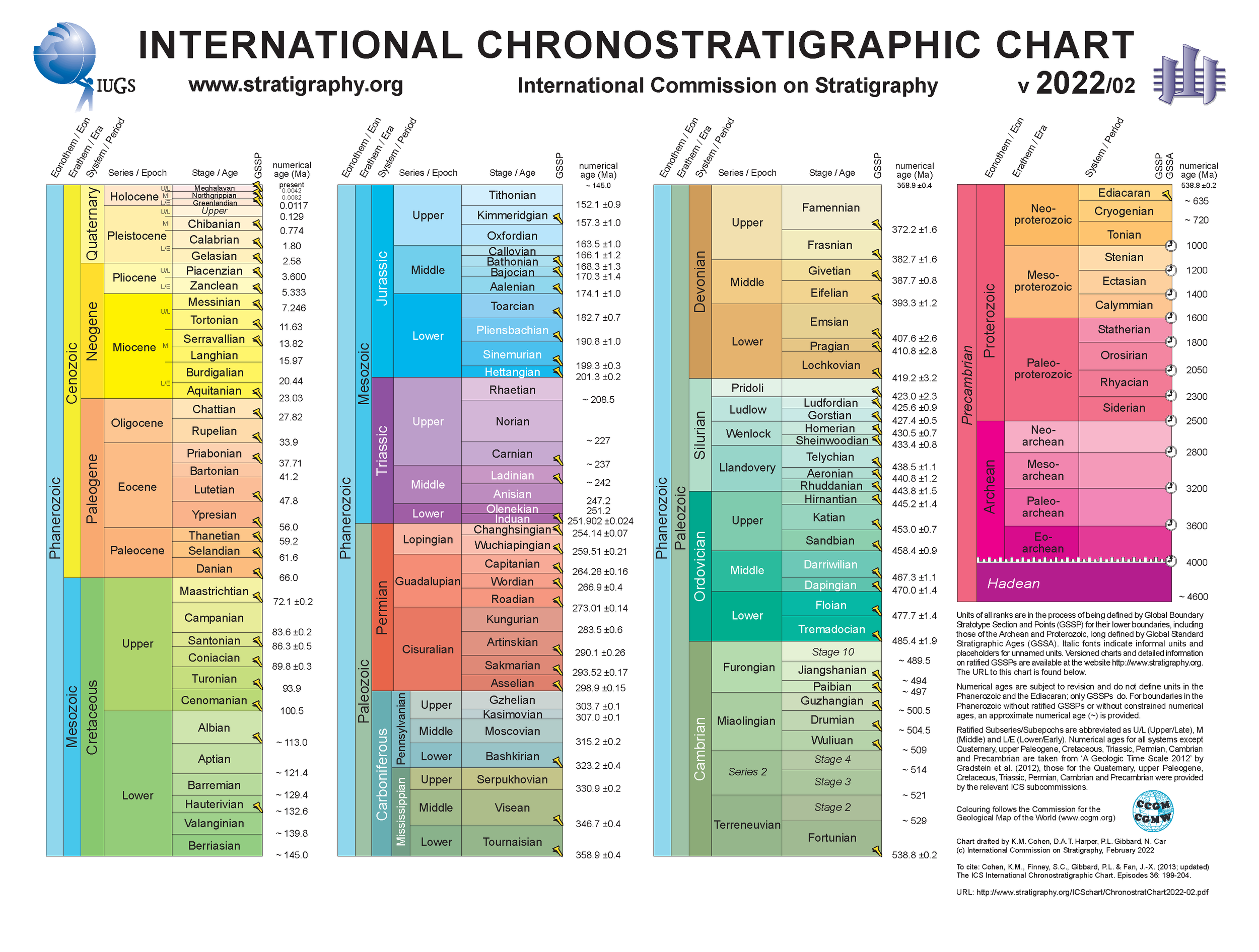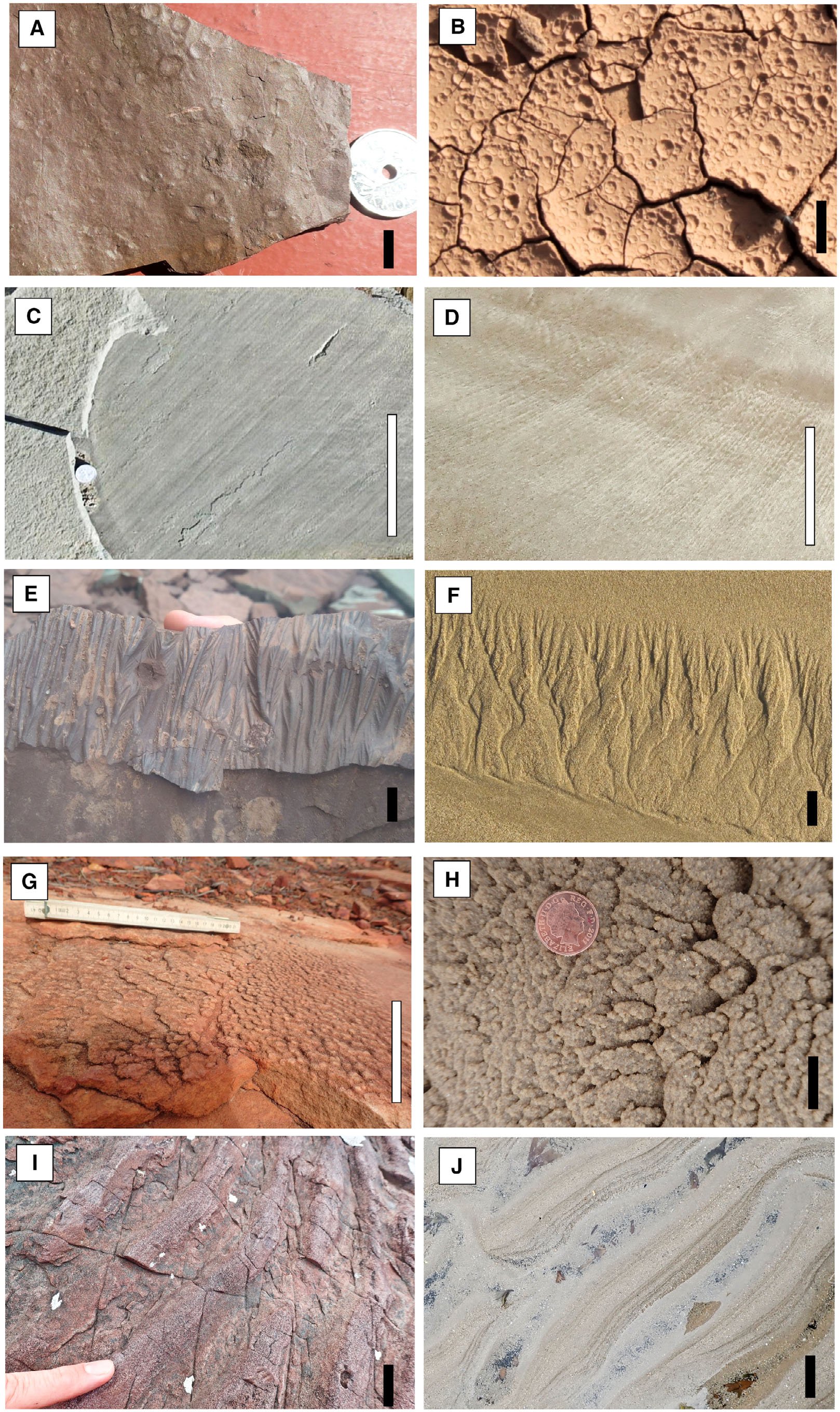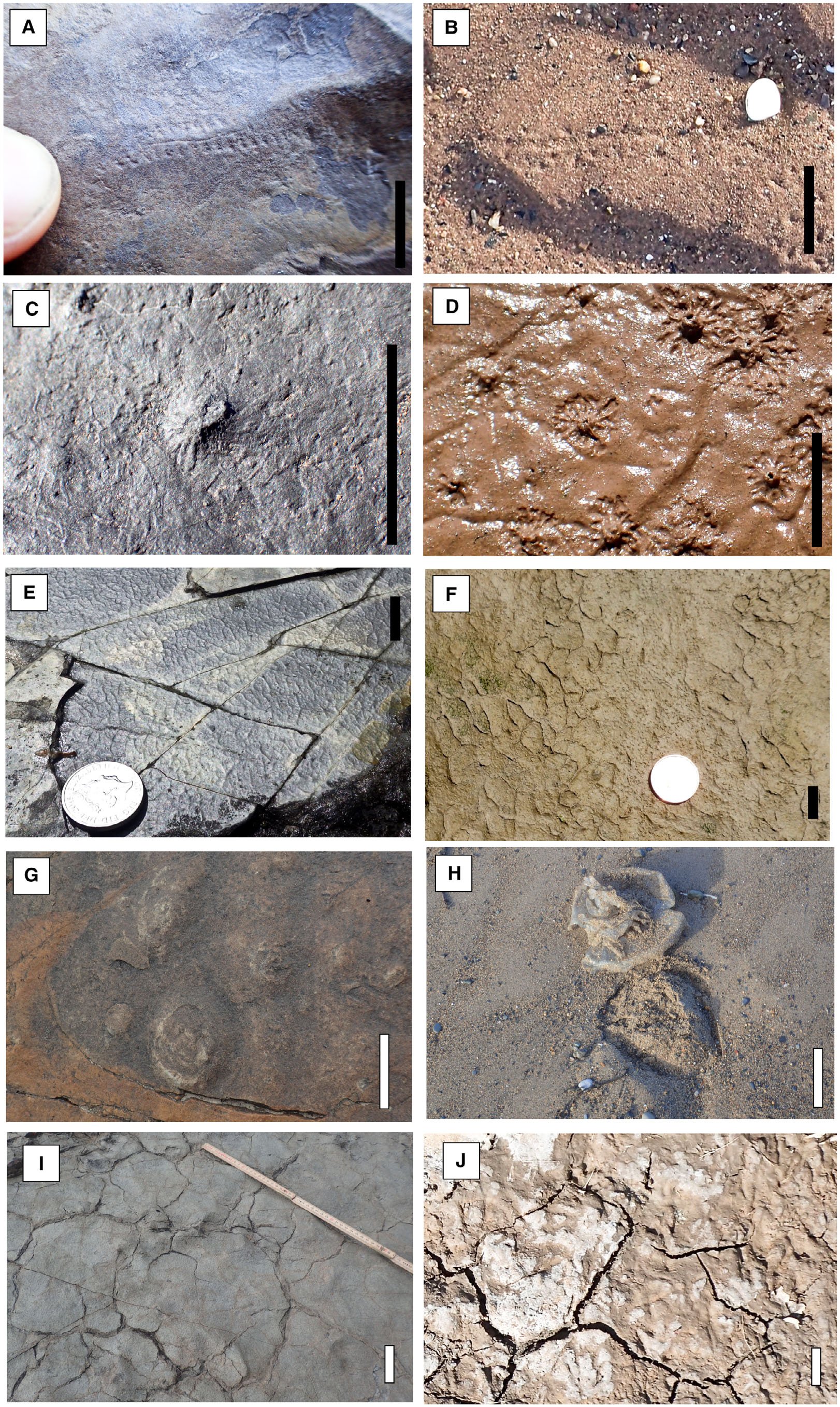Neil Davies on the Greening of the Continents
Listen to the podcast here or wherever you listen to podcasts.
Scroll down for illustrations that support the podcast.
Neil Davies is a Lecturer in Sedimentary Geology at the University of Cambridge. He studies the interconnections and feedback loops between life and sedimentation. His research aims to understand how such interactions manifest themselves in the rock record. He does this by combining analyses of sedimentary structures and textures, stratigraphy, and trace fossils.
Podcast Illustrations
All images courtesy of Neil Davies unless otherwise indicated.
In the podcast, Neil Davies discusses the development of land-based plant life, starting on continental margins in the Ordovician, accelerating in the Silurian, and becoming widely established and diversified by the Devonian.
© International Commission on Stratigraphy, February 2022
Remains of early Devonian zosterophyll plants from the Andréebreen Formation of northern Svalbard, Norway. The zosterophylls are a group of extinct land plants that first appeared in the Silurian. They were among the first vascular plants in the fossil record, and had a world-wide distribution.
Reconstruction of an Upper Silurian zosterophyll.
Courtesy of Matteo De Stefano and Museo delle Scienze, Trento
Standing lycopsid trees in the late Carboniferous from the Sydney Mines Formation of Nova Scotia.
Diorama of a Carboniferous coal forest. The large trees with a grid-like pattern on their trunks are lycopsids.
Courtesy of the American Museum of Natural History
What is Exceptional and What is the Norm in the Sedimentary Record?
In the podcast, Neil Davies discusses a class of features in the sedimentary record that he calls “true substrates.” These are sedimentary bedding planes that demonstrably existed at the sediment-air, or sediment-water interface at the time of deposition. He asks whether true substrates are characteristic samplings of their time and place, or whether they are freak accidents that escaped destruction through exceptional circumstances, which would make them unrepresentative anomalies within a recycled and lost norm. The images here show examples of physical sedimentary structures that provide evidence for true substrates in the sedimentary stratigraphic record (on the left), with modern analogues (on the right). (A) and (B) Raindrop impressions. (A) Silurian Sundvollen Formation, Kroksund, Norway. (B) Boom River, Kyrgyzstan. (C) and (D) Parting lineation developed in plane bed flow regime. (C) Devonian Escuminiac Formation, Miguasha, Quebec, Canada. (D) Alnmouth, Northumberland, England. (E) and (F) Rill marks formed by draining water. (E) Mississippian Shepody Formation, Peck’s Point, New Brunswick, Canada (hyporelief cast of true substrate). (F) Holkham, Norfolk, England. (G) and (H) Adhesion ripples. (G) Silurian Tumblagooda Sandstone, Kalbarri, Western Australia. (H) Holkham, Norfolk, England. (I) and (J) Water-level drainage marks on ripple flanks. (I) Mesoproterozoic Meall Dearg Formation, Rubha Réidh, Scotland. (J) Alnmouth, Northumberland, England. White scale bars are 10 cm long; black scale bars are 1 cm long.
(G) and (H) from Kocurek & Fielder (1982) J. Sediment Res., 52, 1229
Examples of biological sedimentary structures providing evidence for true substrates in the stratigraphic sedimentrary record (on the left), with modern analogues (on the right). (A) and (B) Arthropod trackways crossing ripple mark crests. (A) Silurian Sundvollen Formation, Kroksund, Norway. (B) Rainy Cove, Nova Scotia, Canada. (C) and (D) Stellate form to aperture of vertical invertebrate feeding burrows. (C) Mississippian Horton Bluff Formation, Blue Beach, Nova Scotia, Canada (hyporelief cast of true substrate). (D) Hopewell Rocks, New Brunswick, Canada. (E) and (F) Reticulate marking due to tangling of biological filaments. (E) Neoproterozoic Diabaig Formation, Diabaig, Scotland. (F) Rye, Sussex, England. (G) and (H) Sand-filled impressions of stranded jellyfish. (G) Cambrian Potsdam Sandstone, Rainbow Falls, New York, USA. (H) St. Cyrus, Scotland. (I) and (J) Desiccated and dried-out microbial mat. (I) Pennsylvanian Parrsboro Formation, West Bay, Nova Scotia, Canada. (J) Stiffkey, Norfolk, England. White scale bars are 10 cm long; black scale bars are 1 cm long.
The Giant Arthropleura Fossil
The largest known arthropod in Earth history was discovered by Neil Davies and his students in January 2018, in a large fallen block of sandstone in a coast cliff at Howick Bay in Northumberland in northern England. The fossil consists of the remains of a giant Arthropleura that lived in the Serpukhovian age in the mid-Carboniferous, about 330 million years ago.
View of the fallen block (white circle) and original position (black circle) in the context of the damage zone around the Howick master fault. HT= thickening of mudrock in the hanging wall of the fault. Red arrows = sense of fault movement. Blue dashed line = approximate position of the Lickar Limestone, which marks the onset of the late Serpukhovian. Scale bar = 5 m.
Courtesy of Geospatial Research Ltd.
Above: slab A of the fossil prior to extraction. Image width is about 60 cm. Right: slab B of the fossil.
(a) Scale of the Howick Arthropleura relative to other articulated giant specimens (preserved remains highlighted in pink) and the largest arthropod trackways known from each Carboniferous-Permian stage. The previously known body fossils were both markedly smaller than the dimensions of Arthropleura revealed by trace fossil evidence. (b) Reconstruction of the Howick Arthropleura within its habitat of a lower delta plain with open woodland.
Further Reading
Davies, N.S., et. al (2021), The Devonian landscape factory: plant–sediment interactions in the Old Red Sandstone of Svalbard and the rise of vegetation as a biogeomorphic agent, Journal of the Geological Society, 178, 2929
Davies, N.S., and Shillito, A.P. (2021), True substrates: The exceptional resolution and unexceptional preservation of deep time snapshots on bedding surfaces, Sedimentology 68, 3307
Davies, N.S., et al. (2022), The largest arthropod in Earth history: insights from newly discovered Arthropleura remains (Serpukhovian Stainmore Formation, Northumberland, England), Journal of the Geological Society, 179, 2021-115














